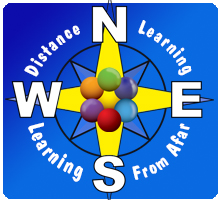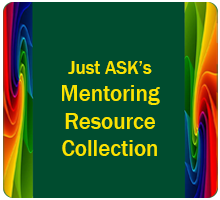
The 21st Century Planning Process
(Featuring the SBE Ovals)
Don’t miss the Fall 2021 Mentoring Memo which features an eleven-minute video clip titled “The 21st Century Planning Process.” Two New York teachers explain how the use of the SBE Ovals and the power of using both qualitative and quantitative data as planning and assessment tools. To further support your use of the 21st Century Planning Process Paula has included in this memo an amazing array of links to Just ASK books with page references, online tools and templates, selected newsletter issues, and a few of her favorite website resources aligned with that work.
(Tantalizing Tidbit: While we titled the clip “The 21st Century Planning Process” it could also be titled “Don’t Cross the Line!” HINT: You will need watch the clip to understand that key point in the process.)
This clip can be used in one-of-one conferences or in staff meetings… actually in any format of mentoring, coaching, or supervisory work. It would be especially useful in addressing a common “teacher trap” of falling into activity level thinking rather than focusing on learning standards and student application of their learning. Don’t miss this one.
Meeting the Diverse Needs of Teachers
In this issue Bruce writes, “One of Just ASK’s most popular books (and corresponding workshop series) is Meeting the Needs of Diverse Learners. Author Paula Rutherford provides an extensive analysis of how to address the learning requirements of all children, no matter their readiness levels. As I was recently paging through that book, I had an aha moment: Not only is it important to support the learning needs of each student, it is equally advantageous for leaders to address the individual needs of the teaching staff.
All principals want to have the best school possible. They go to great lengths to hire the most qualified candidates. Then the real work begins. It is incumbent upon all leaders to look across their faculty as a whole and consider how each individual functions on a day-to-day basis to provide the best learning experience possible for the young people they teach. The question about teacher diverse needs then becomes:
What are some important considerations that an exceptional leader should take into account in order to have a positive and productive?”
As you read the nine suggestions provided in this issue, ask yourself what suggestion you would add to make this a “Top Ten List of Ways to Meet the Diverse Needs of Teachers?”
Be sure to read this thought provoking issue and then take action.
Quickwrites
Boost Writing Production and Engagement
In this issue Heather writes, “As we return to another school year, there will still be many unknowns. What we do know, however, is that our students deserve the promise of sound instructional practices that meet them where they are and prepare them for what’s to come. Now, more than ever, it the time to have predictable routines, opportunities to build stamina, and classrooms where it is safe to take risks as learners. One way to do this is through the use of daily Quickwrites.
In his book, Conditions for Learning, Brian Cambourne shares how “The majority of teachers frame writing as a medium for communication. Very few frame it as a medium for thinking, learning and solving problems.” However, that is precisely what writing should be for our students: the opportunity to think on the page and put writing to paper every day, rather than spending their time thinking about what to write. According to author Paula Bourque, “Frequent short bursts of writing throughout the day give our students more time to think on paper with greater automaticity, fluency, and agency to discover what they know.”

How Leaders Think Matters More Than What They Do
The issue of EmpowerED 3.2.1 titled “How Leaders Think Matters More Than What They Do” is now available. Marcia writes “I’ve always been a leadership geek digging into and getting lost in research studies, dissertations, articles, books, and blogs both inside and outside of education. I’ve always believed that effective leadership is effective leadership regardless if you’re a company CEO or an educational leader. The similarities of the ASK construct (attitudes, skills, and knowledge) far outweigh the differences of the discipline.” She cites three books:
- The Leadership Gap: What Stands Between You and Your Greatness by Lolly Daskal
- 10 Mindframes for Leaders: The Visible Learning Approach to School Success by John Hattie and Raymond Smith
- Start With Why: How Great Leaders Inspire Everyone to Take Action by Simon Sinek
She further writes, “The common link among these and other experts is that great leaders are great learners and thinkers. They learn, grow, and change from evaluating their impact on others. That’s all about thinking more than it is about doing more.” Read now!
Access the archives and subscribe to EmpowerED 3.2.1
Distance Learning Collection
The Just ASK Team has written new articles and updated some older ones as 2.0 versions to support our many colleagues who are tasked with creating positive and productive learning experiences from a distance and/or in hybrid or face-to-face environments that are ever evolving. A special thanks to Marcia Baldanza for sharing so many powerful stories from her work as a professor, K-12 educational leader, and mom and for providing us with dozens of amazing and helpful links. Feel free to share with colleagues near and far.
Click here to access the collection

















